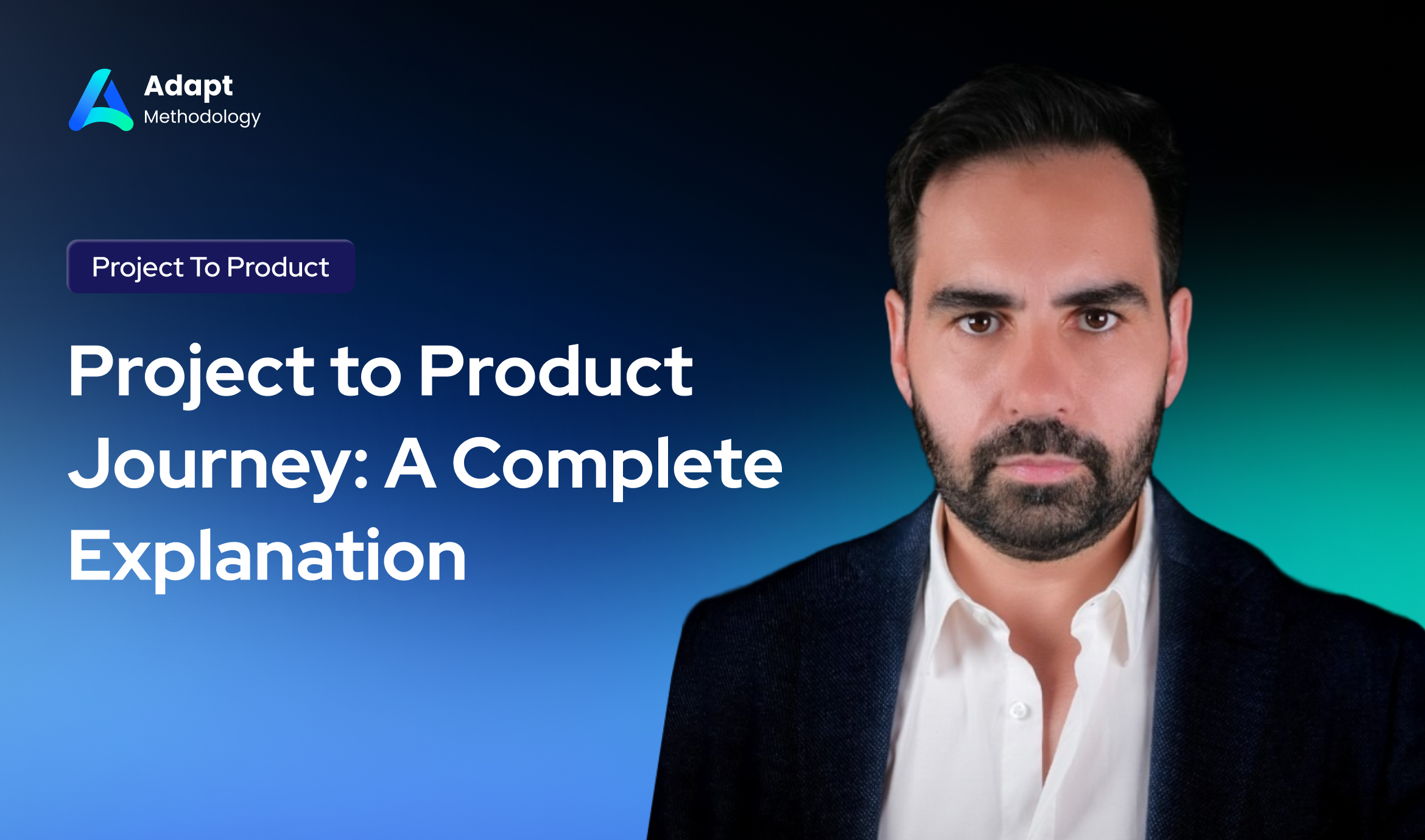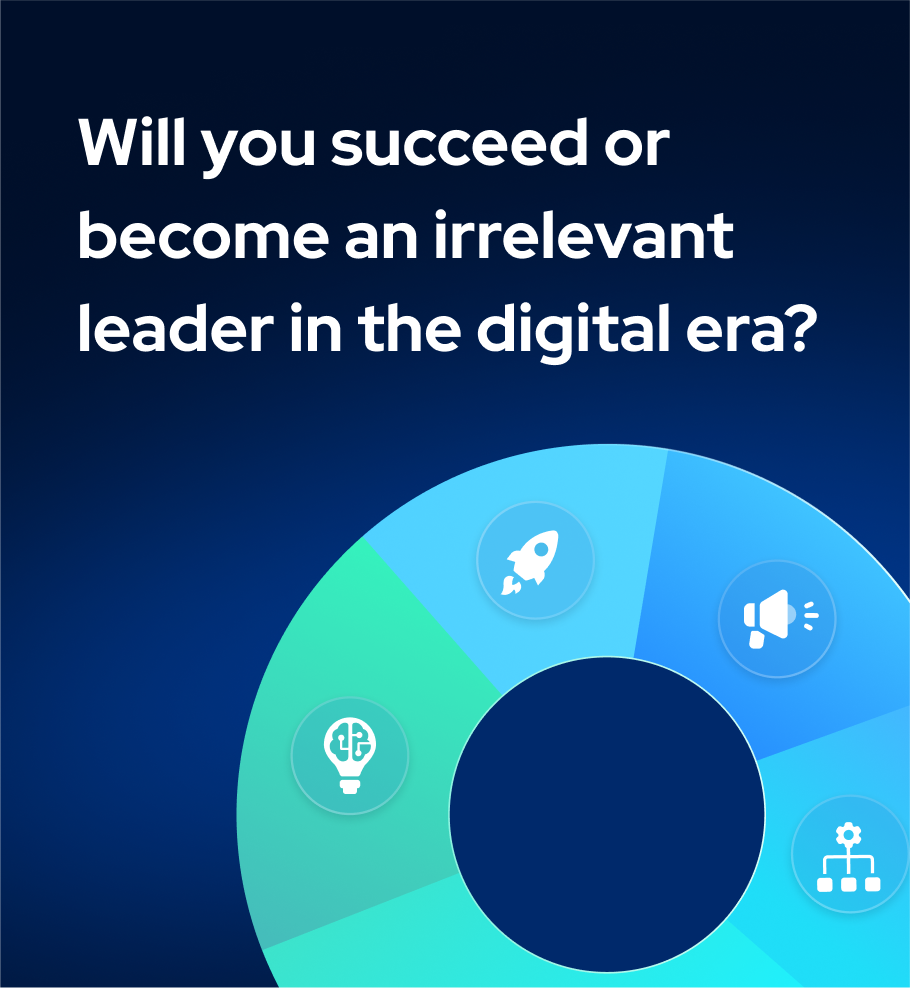Share this
Project to Product Journey - A Complete Explanation
by Luis Gonçalves on Feb 11, 2024 1:13:41 AM

The journey from project to product is an essential transformation that many organizations are going through today. This shift reflects a change in mindset, focus, and processes to deliver better business value and customer satisfaction.
In this article, we will discuss the differences between project and product management, the importance of this transition, the steps to successfully transition, and the benefits of embracing the product mindset.
ADAPT Methodology® is a unique Digital Product Development framework to change traditional project-centric companies toward product-led companies!
Society changed and leaders need support in the way how they lead and design their digital product organizations, that is the reason why the ADAPT Methodology® was created, but now let’s get a deep dive into the Project To Product Journey topic.
Understanding Project and Product Management
Differences between Project and Product Management
Project management focuses on the completion of a specific project within a set timeline and budget. It is goal-oriented and follows a linear process. On the other hand, product management is a continuous process that aims to deliver value to the customers by building and improving a product over time. The product manager is responsible for the product's lifecycle, including its conception, development, launch, and continuous improvement.
The Shift from Project to Product
Why is this shift important?
The project to product shift is crucial because it moves the organization's focus from short-term goals to long-term value creation. This approach enables companies to stay relevant and competitive in the rapidly changing business landscape. Embracing the product mindset allows organizations to adapt to customer needs, innovate, and deliver value continuously.
Challenges of transitioning
Transitioning from a project to a product mindset can be challenging, as it requires a change in organizational culture, processes, and priorities. Resistance to change, lack of clear goals, and absence of cross-functional collaboration can hinder the transition.
Steps for a Successful Project to Product Journey
1. Align with business goals
Ensure that the product vision aligns with the organization's overall business goals. This alignment will help prioritize the right initiatives and foster a shared sense of purpose.
2. Prioritize customer needs
Adopt a customer-centric approach by focusing on understanding and addressing customer needs, expectations, and pain points. This mindset will help build products that deliver real value to the customers.
3. Develop cross-functional teams
Create cross-functional teams comprising members from different departments, such as design, development, marketing, and sales. These teams will collaborate and communicate effectively, resulting in better decision-making and faster product development.
4. Adopt Agile methodologies
Implement Agile methodologies, such as Scrum or Kanban, to enable iterative product development, continuous improvement, and adaptability to change. This approach helps teams to work more efficiently and respond to customer feedback quickly.
5. Measure success and progress
Establish Key Performance Indicators (KPIs) to measure the success of your product initiatives and track progress over time. These metrics can include customer satisfaction, revenue growth, user engagement, and product adoption, among others. Regularly reviewing and adjusting these KPIs will help your organization stay on track and make data-driven decisions.
Benefits of Embracing the Project to Product Journey
Increased customer satisfaction
By prioritizing customer needs and continuously improving your product, your organization will deliver greater value to your customers, leading to increased satisfaction and loyalty.
Enhanced innovation
A product mindset fosters a culture of innovation and experimentation, enabling your organization to stay ahead of the competition by continuously developing new features, functionalities, and improvements.
Improved efficiency and productivity
The transition from project to product encourages cross-functional collaboration, streamlined processes, and iterative development. These factors contribute to increased efficiency and productivity within the organization.
FAQs
- What is the main difference between project and product management?Project management is focused on the completion of specific projects within a set timeline and budget, while product management is a continuous process that aims to deliver value to customers by building and improving a product over time.
- Why is the shift from project to product important?The shift is important because it moves the organization's focus from short-term goals to long-term value creation, enabling companies to stay relevant and competitive in a rapidly changing business landscape.
- What are some challenges of transitioning from project to product?Some challenges include resistance to change, lack of clear goals, absence of cross-functional collaboration, and the need to adopt new processes and methodologies.
- How can organizations successfully transition from project to product?Organizations can successfully transition by aligning their product vision with business goals, prioritizing customer needs, developing cross-functional teams, adopting Agile methodologies, and measuring success and progress through KPIs.
- What are some benefits of embracing the product mindset?Some benefits include increased customer satisfaction, enhanced innovation, and improved efficiency and productivity within the organization.
Conclusion
The project to product journey is a crucial transformation that can significantly impact an organization's success. By adopting a product mindset, organizations can better align with business goals, prioritize customer needs, and drive innovation. The steps outlined in this article can help organizations navigate this transition and reap the benefits of a product-centric approach.
Did you like this article?
We enable leaders to become highly valued and recognized to make an impact on the World by helping them to design Digital Product Companies that will thrive and nourish in the Digital Age, we do this by applying our own ADAPT Methodology®.
If you are interested in knowing if you have what it takes to design and build a great digital product company simply take our Digital Leadership Influence Scorecard.
If you want to know how we can help you to start your transformation please check out our: Training.
If you are interested in doing a transformation in your company please check out our: Consulting.
Share this
- Product Mindset (14)
- Scrum (14)
- Agile Methodologies (13)
- Project To Product (10)
- Communities Of Practice (8)
- Knowledge Sharing (8)
- Time To Market (8)
- Product Strategy (6)
- Continuous Improvement (5)
- OKRs (5)
- Strategy (5)
- Product Discovery (4)
- Product Owner (3)
- Technical Excellency (3)
- Innovation (2)
- Scrum Master (2)
- Team Building (2)
- Content Marketing Strategy (1)
- Cost Of Delay (1)
- Customer Feedback (1)
- Customer Journey (1)
- Customer Personas (1)
- Design Thinking (1)
- Digital Leadership (1)
- Google Design Sprint (1)
- Lean Budgeting (1)
- Lean Change Management (1)
- Organisational Impediments (1)
- Product Metrics (1)
- Product Roadmaps (1)

Organisational Mastery
Get your free copy

ADAPT
Get your free copy

Product First
Get your free copy

Scorecard
Take The Test


